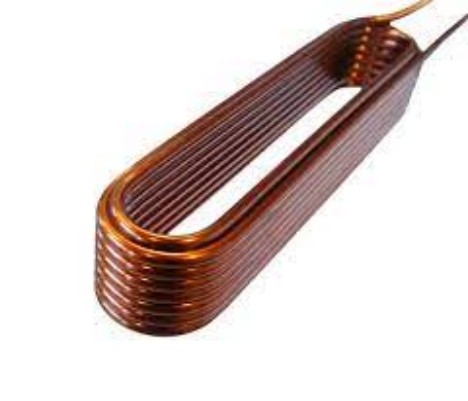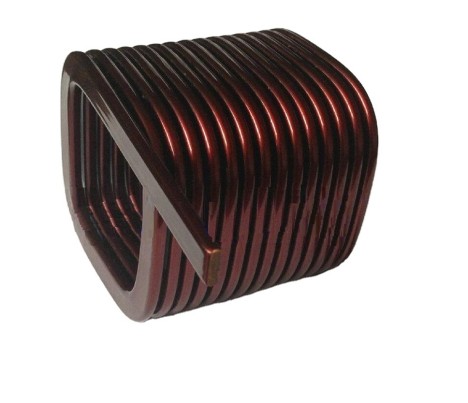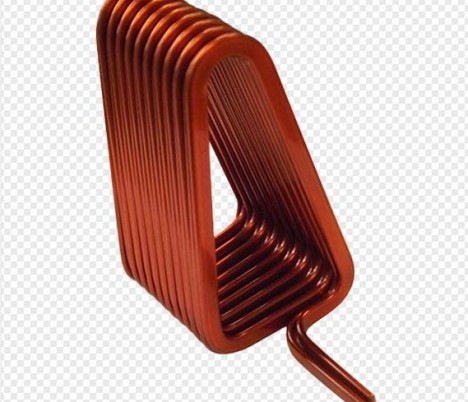Copper strap is often used for winding field coils of large current capacity. It may be wound spirally, or helically on edge, the insulation between turns being paper for small, low-voltage, moderately cool maclchines, or asbestos tape for railway motors and the like. The edge wound form is preferred in the latter case, but where the strap is too thin it is wound spirally or flat. The construction is mechanically rugged, making it suitable for railway motors where vibration and mechanical service are severe. When insulated with asbestos, the strap copper coil is practically heat proof, but it does not cool so readily when wound fat as in the edge-wound form. In the latter type, asbestos strips are cut to shape and cemented in place with shellac. After the coil is comipletely wound it is pressed down in a steel frame and all of the infammable material burnt out with a gas fame at a high temperature, leaving a coil which is almost indestructible by heat. Since the edges of the strap are bare, this type of coil radiates heat well. In large machines where the series field is quite large, strap copper may be wound on edge with simply an air space between turns for insulation, the turns being mechanically separated at intervals by suitable spacers.

The great majority of both shunt- and ‘series-field coils are form-wound with asbestos, enamel, and textile-covered copper wires. Large field coils are wound with square copper wire having rounded edges or corners. After winding or finishing, they are sometimes bent to conform to the shape of the frame, especially in small motors. The coil is taped in this case before forming to fit the laminated stator frame of the high-speed vacuum-cleaner motor illustrated. Field coils of this general class are almost invariably taped. Enameled wire, paper-wound coils for use in automobile starting and lighting equipment may be bent or formed if previously immersed in paraffin for lubrication, if the coil length.

Armature Coils
In small machines, the wire is wound direetly into the insulated slots. The core may be insulated with strip insulation placed in the slots and cut somewhat longer than the armature slot and wide enough to allow the two edges to project for a sufficient distance out of the slot. In larger machines, the coils are first made and then placed in the slots. Such coils are either shuttle-wound and pulled to final shape, or else they are wound to their final shapes on molds. Coils not wound in layers are generally referred to as mush coils. Stator coils belong to this general class.

